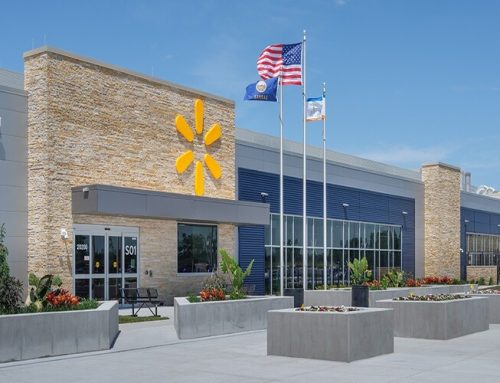Source: USDA, CTIC, ASTA joint news release
Washington, DC — A new national cover crop survey report released today challenges assumptions on the role of incentive payments in cover crop adoption. Incentives play a key role in getting some farmers started on cover crops–49% of the cover crop users participating in the survey reported receiving some sort of payment for cover crops in 2022, and 77.8% of cover crop non-users said incentive payments would be helpful.
However, 90.3% of the farmers who were receiving cover crop incentives reported that they would definitely or probably continue planting cover crops after the payments ended, while only 3.3% said they definitely or probably would drop cover crops at the end of the incentive program.
In all, just 15.6% of cover crop users said receiving incentive payments was one of their goals for cover cropping.
These findings were among many conclusions drawn in a report, issued jointly by the USDA-NIFA Sustainable Agriculture Research and Education (SARE) program, Conservation Technology Information Center (CTIC) and the American Seed Trade Association (ASTA), based on insights from nearly 800 farmers in 49 states.
“Some people mistakenly assume that farmers only stick with cover crops because of payments, but this year’s National Cover Crop Survey provided a very different perspective,” says Dr. Rob Myers of SARE, lead researcher on the 2022-2023 National Cover Crop Survey Report.
“What the survey showed is that cover crop incentive payments are an important factor in encouraging and helping farmers to transition into cover cropping, but once they see the soil health improvements and other cover crop benefits, most stick with cover crop planting long after the incentives end,” Myers notes. “Insights like these make the National Cover Crop Survey such a valuable tool in understanding the impacts of cover crops, the motivations of users and non-users, and needs for additional information and incentives.”
Users and Non-Users
The 2022-2023 report marks the seventh SARE/CTIC/ASTA National Cover Crop Survey. The survey series started in 2012, and data from past surveys has been used in academic research, educational programs, policy planning and even testimony to Congress.
“The National Cover Crop Survey goes beyond acreage statistics by providing insights into what farmers want to achieve with cover crops, what motivates them to try and continue the process, how cover crops relate to other soil-building practices like no-till, and their approaches to using the practice,” says Ryan Heiniger, executive director of CTIC.
“We are also just as interested in the perspectives of non-users of cover crops. Understanding their concerns and information needs provide direction for developing better outreach materials, and can help policymakers clear obstacles that hamper adoption or create more attractive incentives.”
Andy LaVigne, president and CEO of ASTA, adds that the survey provides seed producers with valuable insight on cover croppers’ needs.
“Our members are extremely interested in learning about the needs of growers when it comes to which varieties they’re seeking and when and how they make cover crop planting decisions,” LaVigne says. “These perspectives help the seed industry plan ahead to ensure that farmers have the species they want as well as genetics that help them manage their cover crops effectively to achieve their goals.”
Additional Insights
The current report summarizes data from 795 farmers divided into user and non-user groups. Among the findings in this year’s survey:
*Cover crop users participating in the survey–including producers of grain, other commodities, and horticultural crops–planted an average (mean) of 413.6 acres of cover crops in 2022. Cover crop acreage has been increasing steadily since the first survey in 2012.
*Cover crops continued to show benefits for corn and soybean yields for experienced users of cover crop. The farmers with 10 or more years of cover crop experience had yield gains of 6.30% on soybeans and a similar 6.27% on corn.
*Farmers with two years or less of cover crop experience had modest soybean yield gains of 3.37% following cover crops; for those inexperienced cover crop users, average corn yields were not statistically different between cover crops and no cover crops.
*Improved soil health was a key goal for 95% of the cover crop users and a high-priority research item for 87%.
*Though 91% of cover crop users selected “add soil organic matter/sequestering carbon” as a key priority, just 16% of the users in the survey who received payments in 2022 reported participating in a carbon market program.
*61% of the cover crop users reported planting green–seeding cash crops into a growing or just-terminated cover crop–somewhere on their operation.
This was the first survey in the SARE/CTIC/ASTA series to explore livestock in cover crops. One in four respondents integrated livestock into their cover crop program. Of those who grazed cover crops, 76% reported a net increase in profit from the practice.
In corn, 42% of cover croppers reported saving money on herbicides after cover crops, and 55% saw no change in herbicide expenditures. Among the “no change” group, 3 out of 4 observed better weed control in corn after cover crops.
Of the farmers using cover crops, 70.3% said it was helpful when transitioning to no-till, in part because of reduced soil compaction, better weed control, and better soil moisture management.
Slightly more cover crop users than non-users reported renting all of their farmland (14% of users vs. 10% of non-users), and non-users were just as likely as cover crop users to own 100% of their farm ground.
The seed supply chain is working effectively to scale with growing adoption. Only 7% of the cover crop users reported regular challenges in sourcing cover crop seed. Seed quality is important: 57% of cover crop users always look for a seed tag and 27% sometimes request them.
For the full survey report and additional resources on cover crops click here.


